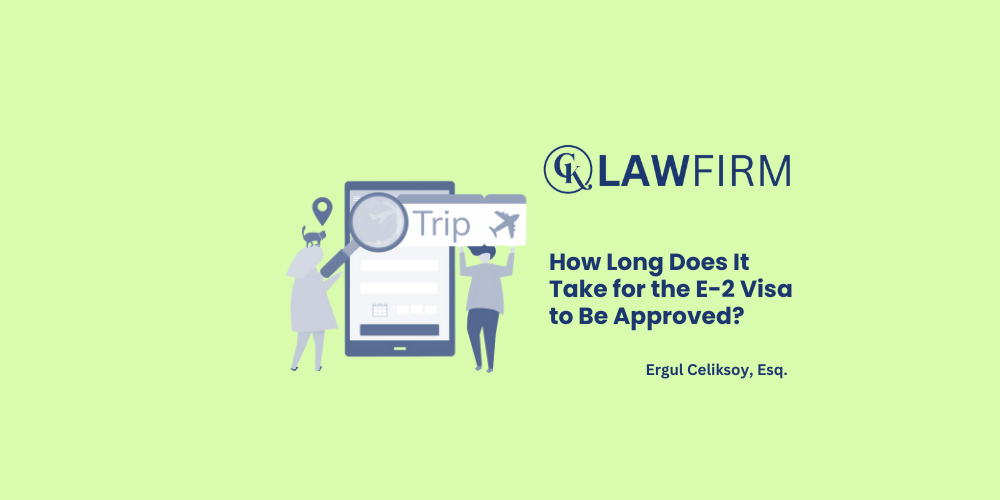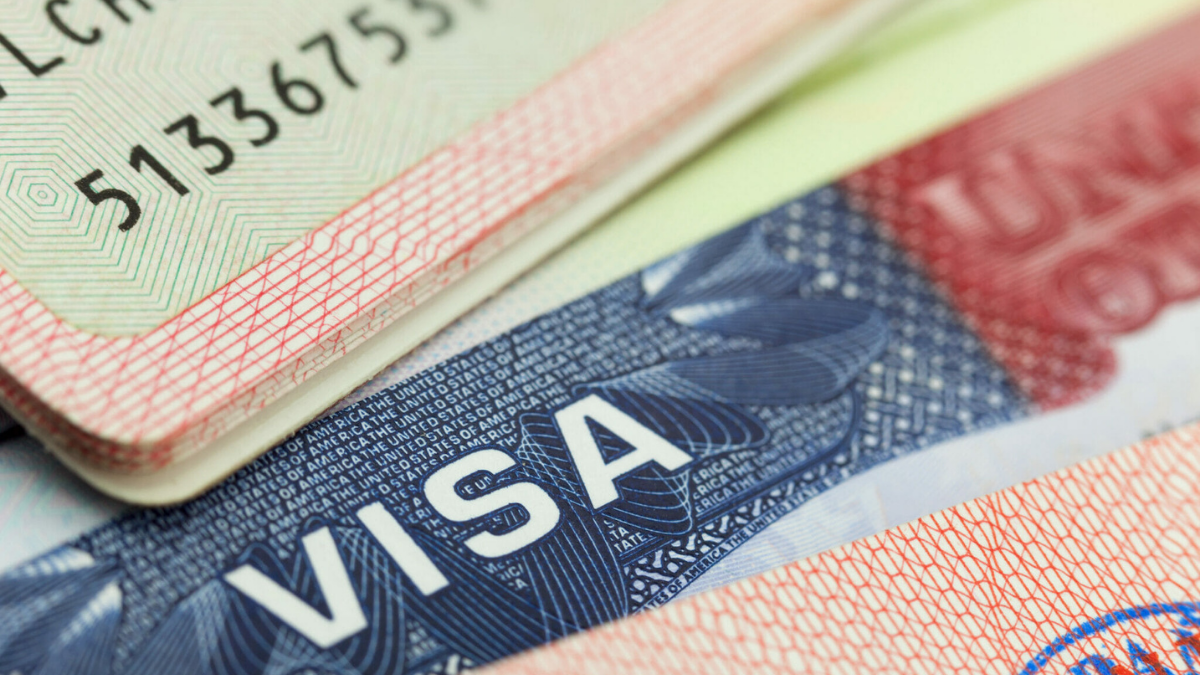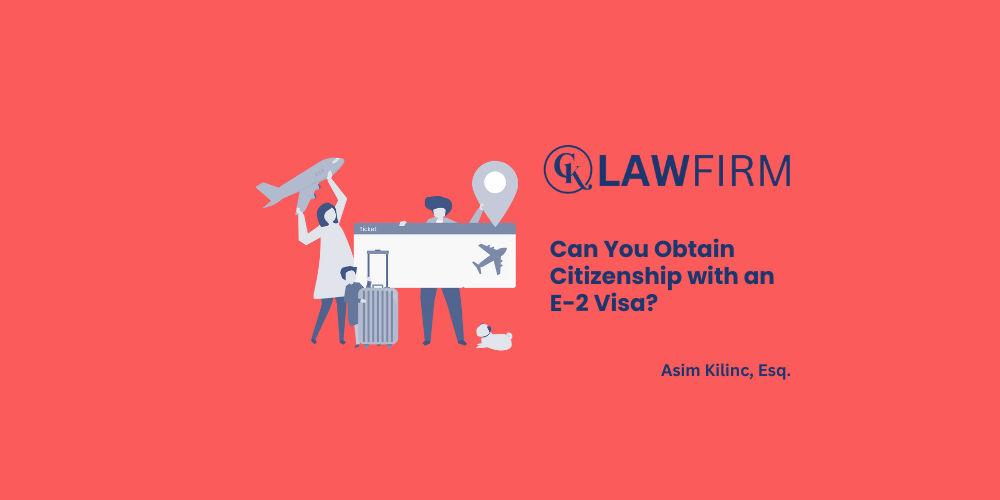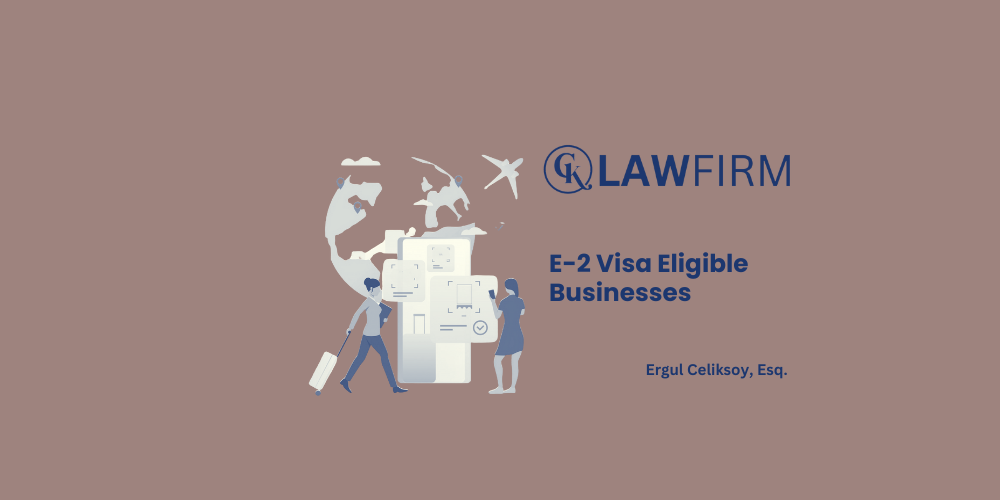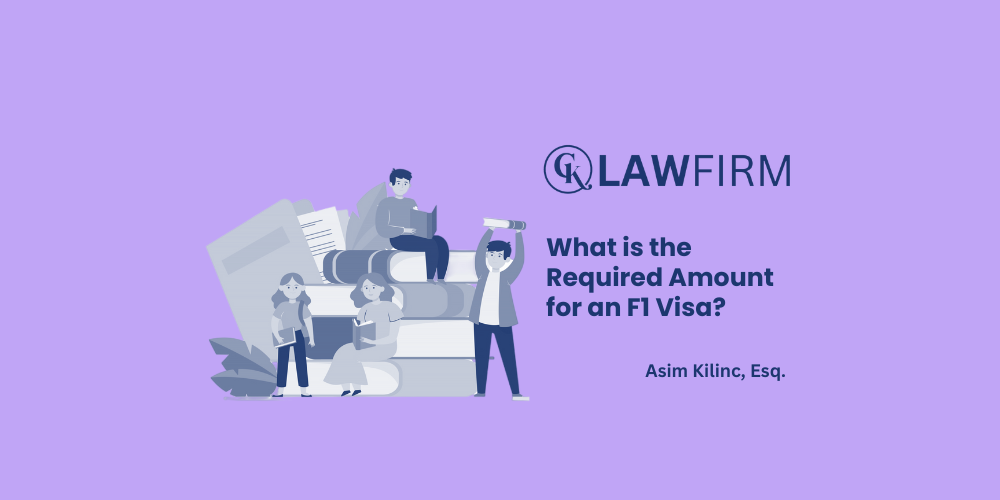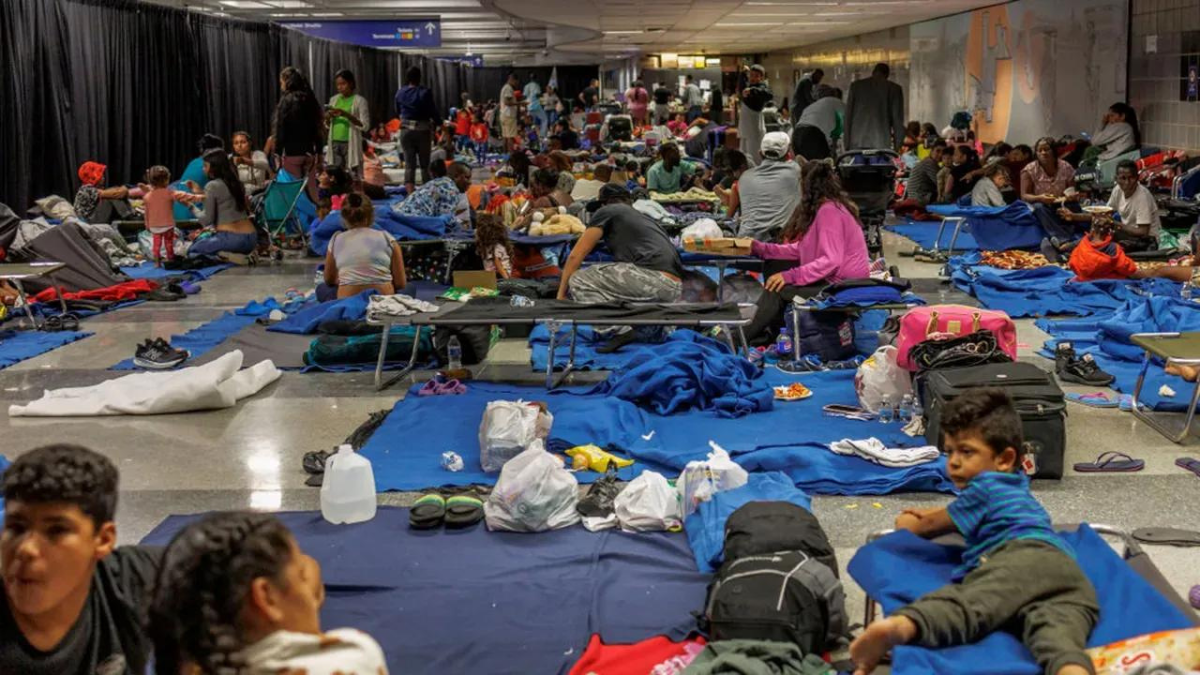Schedule an Appointment with Our Attorneys Now
By Ergul Celiksoy, Immigration Attorney at CK Law Firm
The E-2 visa is an ideal visa type for investors who want to start a business or manage an existing one in the United States. However, for applicants, the processing time is a critical concern. The processing time for the E-2 visa varies depending on where the application is submitted, the completeness of the application file, and the workload of the processing authority. In this article, we will discuss in detail how the process works, the factors that affect the timeline, and what can be done to expedite applications:
- What Factors Influence E-2 Visa Processing Times?
- Key Factors Impacting E-2 Visa Processing Time
- Tips to Expedite the E-2 Visa Process
If you have additional questions about this topic, don’t forget that you can reach out to me through the comments section below, send me a message directly on LinkedIn, or contact me via the website of CK Law Firm, where I am a co-founder.
What Factors Influence E-2 Visa Processing Times?
The E-2 visa application process differs depending on whether the application is filed from within the United States or at a U.S. consulate abroad:
- Consular Applications: Applications submitted at a U.S. consulate abroad typically result in faster processing times. The timeline for consular applications depends on the appointment date, the consulate’s workload, and country-specific procedures. Most cases are processed within 2 to 8 weeks.
- USCIS Applications: If the application is filed from within the U.S., it is reviewed by USCIS (United States Citizenship and Immigration Services). This process usually takes longer and can range from 2 to 6 months. However, with USCIS’s Premium Processing service, the application can be processed within 15 days for an additional fee.
Key Factors Impacting E-2 Visa Processing Time
Several factors influence how long it takes to process an E-2 visa application:
- Completeness of the Application File: A complete and accurate application file can significantly speed up the process. Missing or incorrect documents may result in requests for additional evidence, which can delay the process.
- Workload at the Consulate or USCIS: The processing time can be affected by the workload at the time of submission. Periods of high demand, such as holiday seasons, can extend the timeline.
- Appointment Wait Times: For consular applications, the wait time for an appointment can impact the overall processing time. In some cases, securing an appointment may take several weeks.
- Applicant’s Background: Factors such as the applicant’s travel history, U.S. entry and exit records, or inconsistencies in their documentation can also affect the review timeline.
Tips to Expedite the E-2 Visa Process
To ensure faster processing of an E-2 visa application, consider the following steps:
- Submit Complete and Accurate Documentation: From the application form to supporting documents, it is crucial to ensure all paperwork is complete and accurate. Provide detailed and clear information, particularly regarding the business plan, investment amount, and the legality of the business.
- Seek Professional Assistance: Working with an immigration attorney for complex applications like the E-2 visa ensures that your file is complete and well-prepared. At CK Law Firm, our experienced team is here to guide you through the process.
- Use Premium Processing: For applications filed within the U.S., USCIS offers a fast-track service that guarantees processing within 15 days for an additional fee.
- Monitor Consular Appointment Availability: For consular applications, regularly check appointment availability and apply for the earliest possible date.
Conclusion
While E-2 visa processing times vary based on several factors, proper planning and professional assistance can help minimize the timeline. At CK Law Firm, we are dedicated to helping you successfully complete your E-2 visa application. For more information about visa processes or to receive professional assistance, contact us through cklawfirm.org, email us at info@cklawfirm.org, or connect with us on LinkedIn.
Who is Attorney Ergül Çeliksoy?
Attorney Dr. Ergül Çeliksoy is a founding partner of CK Law Firm and also serves as an Assistant Professor of Law at the University of Nottingham. With extensive experience in U.S. immigration law, Dr. Çeliksoy completed a Master’s degree in international law and human rights law at the University of Nottingham in 2017, followed by a Ph.D. at the same university. His Ph.D., completed in 2022 at the University of Nottingham School of Law, marked a significant milestone in his academic career. Dr. Çeliksoy has published extensively in leading academic journals and is internationally recognized for his expertise in modern slavery, criminal justice, and criminal law. As a member of the California Bar, Dr. Çeliksoy offers exceptional service to his clients, particularly in U.S. immigration law cases. His expertise and experience in immigration law significantly contribute to CK Law Firm’s work in this area.
Dr. Çeliksoy provides comprehensive and strategic solutions to his clients in immigration law cases, helping secure their legal status in the U.S. His work on human rights and immigration processes, particularly in modern slavery and criminal law, effectively addresses the complex legal issues immigrants face. Dr. Çeliksoy reinforces CK Law Firm’s leadership in immigration law by offering reliable and effective legal consulting services to his clients, helping them build new lives in the United States.
By Ozlem Kara, Content Editor at CK Law Firm
The U.S. Department of State has announced that all available visas for the EB-3, Other Workers (EW), and EB-5 visa categories have been issued for the 2024 fiscal year. U.S. embassies and consulates will not issue any more visas in these categories until October 1, 2024.
Understanding the Visa Categories
The EB-3 visa category allows U.S. employers to sponsor foreign workers for permanent residency. This category is divided into three subcategories:
- Skilled Workers: Jobs that require at least two years of experience or training.
- Professionals: Jobs that require at least a U.S. bachelor’s degree or its foreign equivalent.
- Unskilled Workers (Other Workers): Jobs that require less than two years of experience or training.
These visas are crucial for industries facing labor shortages, such as healthcare, where both skilled and unskilled workers are in high demand. By filling these roles with foreign workers, the EB-3 and EW visa categories help support these industries and contribute to the overall U.S. economy.
The EB-5 visa, on the other hand, allows foreign investors to obtain a green card by investing a minimum amount in a U.S. business that creates or preserves at least 10 full-time jobs for U.S. workers.
Annual Limits and Their Impact
The Immigration and Nationality Act (INA) imposes strict annual limits on the number of employment-based immigrant visas that can be issued each fiscal year. Specifically, 28.6% of the worldwide employment-based visa limit is allocated to the EB-3 category. Within this allocation, no more than 10,000 visas are available for the EW subcategory. Additionally, 7.1% of the total number of employment-based visas is allocated to the EB-5 category.
For the 2024 fiscal year, these limits have already been reached. Consequently, U.S. embassies and consulates worldwide will not issue any further visas in these categories until the new fiscal year begins on October 1, 2024. This pause will impact employers and workers who were in the process of applying or planning to apply for these visas, requiring them to wait until the next fiscal year to continue their applications.
What Employers and Workers Should Know
The early exhaustion of EB-3 and EW visas for FY 2024 highlights the high demand for these categories, especially as the U.S. economy continues to rely on foreign workers to fill critical roles. Employers who depend on these visas to bring in essential talent should be aware of the timing and limitations imposed by the annual cap.
For both workers and employers, understanding these visa caps is vital for effective planning. Employers should work closely with their legal teams and immigration counsel to navigate the timing of visa applications and be prepared to act swiftly when the new fiscal year begins. Workers, on the other hand, should stay informed about the status of their applications and maintain communication with their employers to manage expectations and plan accordingly.
Looking Ahead
The start of FY 2025 is less than two months away. On October 1, the annual limits for these visas will reset, allowing embassies and consulates to resume processing visas in these categories. Employers and workers should be ready to move forward with their applications as soon as the new fiscal year begins to avoid the rush of applicants.
For more information, please visit Boundless Blog!
By Asim Kilinc, Immigration Attorney at CK Law Firm
The E-2 visa is a popular option for individuals planning to invest in the United States, but it does not directly grant citizenship. The E-2 visa offers temporary immigrant status that can be renewed indefinitely under certain conditions, but additional steps must be taken to achieve U.S. citizenship. So, how can E-2 visa holders pursue citizenship? Here are the details on this topic.
- The Relationship Between the E-2 Visa and Direct Citizenship
- Potential Paths from an E-2 Visa to Citizenship
- Challenges of Obtaining Citizenship with an E-2 Visa
If you have any other questions about this topic, please don’t hesitate to reach out via the comments section below, send me a direct message on LinkedIn, or contact me through the website of CK Law Firm, where I am a co-founder!
The Relationship Between the E-2 Visa and Direct Citizenship
The E-2 visa is a temporary visa category designed for individuals planning to invest in the United States and includes the following features:
- Temporary Status: The E-2 visa allows an investor to live and work in the U.S., but this right is limited in duration. Most E-2 visas are granted for 2 to 5 years and can be renewed as long as specific requirements are met.
- No Green Card (Permanent Resident Status): The E-2 visa does not directly provide a pathway to a Green Card or citizenship. However, E-2 visa holders may consider alternative methods to achieve U.S. citizenship.
- Non-Immigrant Intent: Since the E-2 visa does not serve immigrant purposes, it is only valid during the investment activities in the U.S. Therefore, it does not directly offer a transition to permanent residency (Green Card).
Potential Paths from an E-2 Visa to Citizenship
E-2 visa holders may pursue U.S. citizenship through several strategies. Here are some of the available pathways:
1. Transitioning to a Green Card
While the E-2 visa does not directly grant a Green Card, investors can take steps to start this process:
- EB-5 Investor Visa: Individuals who can make a larger investment may qualify for the EB-5 visa, one of the most direct routes to obtaining a Green Card. The EB-5 visa typically requires an investment of $800,000 to $1,050,000.
- Marriage or Family Sponsorship: Marrying a U.S. citizen or receiving sponsorship through a Green Card-holding family member is another route to citizenship.
- Employment-Based Green Cards: Investors may apply for an employment-based Green Card through sponsorship within the sector they work in with the E-2 visa.
2. Transitioning from a Green Card to Citizenship
Once an E-2 visa holder obtains a Green Card, they can begin the citizenship process. Green Card holders are generally eligible to apply for citizenship after legally residing in the U.S. for five years.
Challenges of Obtaining Citizenship with an E-2 Visa
The transition from an E-2 visa to U.S. citizenship comes with certain challenges:
- No Direct Path: The E-2 visa does not provide a direct transition to a Green Card or citizenship, requiring investors to explore alternative options.
- Sustainability of Investment: To continuously renew the E-2 visa, the business in which the investment is made must remain active, profitable, and sustainable. This requires adapting to changing market conditions and careful business planning.
- Complexity of Alternative Routes: Other pathways to transition from an E-2 visa to a Green Card or citizenship (e.g., family sponsorship or employment-based applications) involve long and detailed processes, which can be challenging for investors.
Conclusion
The journey from an E-2 visa to a Green Card and U.S. citizenship can be complex. At CK Law Firm, we are committed to simplifying this process and providing tailored solutions for investors’ needs.
For more information about the E-2 visa and U.S. citizenship, feel free to reach out to us.
To receive professional support, detailed information, and consultation services, contact us at cklawfirm.org, via email at info@cklawfirm.org, or through LinkedIn.
Who is Attorney Asım Kılınç?
Attorney Asım Kılınç is the co-founder of CK Law Firm and is recognized for his expertise in immigration law and U.S. asylum applications. Kılınç completed his Master’s degree at Southern Methodist University Dedman School of Law and is a member of the Missouri Bar Association, with a focus on U.S. immigration law.
Attorney Kılınç’s extensive knowledge and experience in immigration law have significantly contributed to CK Law Firm’s success in this field. He has actively participated in the preparation of over 1,000 cases, demonstrating his expertise in this area. By providing comprehensive and professional legal support to his clients, he helps them adapt to their new lives in the U.S.
Attorney Kılınç is also well-versed in U.S. asylum applications. He meticulously guides his clients through the process and ensures they receive the best legal advice. He provides top-quality service to clients in matters of citizenship, Green Card, work permits, and other immigration processes, supporting them from start to finish on their journey to U.S. citizenship.
Attorney Asım Kılınç, who solidifies CK Law Firm’s leadership in immigration law and U.S. asylum applications, offers reliable and effective legal consultancy services to clients, assisting them in building a new life in the U.S.
By Ergul Celiksoy, Immigration Attorney at CK Law Firm
The E-2 visa is a special immigration status granted to foreign nationals who wish to invest in the United States under treaties of commerce and navigation between the U.S. and certain countries. However, eligibility for this visa depends not only on the size of the investment but also on the type of business and its contribution to the U.S. economy. So, which businesses qualify for the E-2 visa, and what should you consider during this process? In this article, we will cover the following points:
- General Characteristics of E-2 Visa Eligible Businesses
- Key Sectors for E-2 Visa Investments
- Importance of the Business Plan and the Application Process
If you have additional questions about this topic, feel free to leave a comment below, message me directly via LinkedIn, or contact me through the website of CK Law Firm, the immigration law firm I co-founded!
General Characteristics of E-2 Visa Eligible Businesses
Businesses eligible for the E-2 visa must meet specific criteria. The general characteristics of a qualifying business are:
- Economic Contribution: The business must contribute directly or indirectly to the U.S. economy. This can include creating new jobs or supporting economic growth.
- Non-Marginal Requirement: The investment must not merely provide the investor’s livelihood but also demonstrate a profitable business model.
- Sufficient Investment Amount: The investment amount should be proportionate to the business’s size and the requirements of the sector. For example, a small café might require a modest budget, while technology startups may need significantly higher capital.
- Operational Activity: The business must be active and operational. Passive investments, such as purchasing real estate alone, do not qualify for an E-2 visa.
Key Sectors for E-2 Visa Investments
Several sectors are popular among E-2 investors. Businesses in these industries tend to meet visa requirements and contribute significantly to the U.S. economy:
Restaurants and Food Services:
Restaurants, cafés, and other food-related businesses are popular choices among E-2 investors. Establishing a restaurant that caters to a demand for specific cuisines can lay a strong foundation for the visa application.
Retail Business:
Small-scale boutiques, grocery stores, and e-commerce platforms are suitable options due to their profitability and sustainability potential.
Technology and Software Startups:
Innovative technology startups are particularly advantageous for E-2 visas due to their high growth potential. A well-prepared business plan and sufficient capital are essential for this type of investment.
Service and Consultancy Firms:
Businesses offering consulting services, such as business management, education, or digital marketing, are also eligible for E-2 visa investments.
Hospitality and Tourism:
Hotels, motels, and other tourism-related businesses are commonly accepted for E-2 visas because of their job creation potential.
Importance of the Business Plan and the Application Process
The success of an E-2 visa application often depends on the strength of the business plan, in addition to the nature of the business. A detailed and convincing business plan is crucial for demonstrating the sustainability and profitability of the investment to immigration authorities.
Key Components of a Business Plan:
- The purpose and mission of the business
- Market analysis and industry research
- Business structure and organizational plan
- Projected revenues and expenses
- Employment opportunities created by the business
Another critical element is documenting the funding source. It is necessary to prove that the investment funds come from legal and personal resources.
Conclusion
The E-2 visa application process can be complex, requiring careful attention to detail. At CK Law Firm, our expert team ensures that investors navigate this process efficiently and successfully. From drafting business plans to compiling the necessary documentation, we provide professional support at every stage.
For professional assistance, detailed information, and consulting services, feel free to reach out to us via cklawfirm.org, info@cklawfirm.org, or LinkedIn.
Who is Attorney Ergül Çeliksoy?
Attorney Dr. Ergül Çeliksoy is a founding partner of CK Law Firm and also serves as an Assistant Professor of Law at the University of Nottingham. With extensive experience in U.S. immigration law, Dr. Çeliksoy completed a Master’s degree in international law and human rights law at the University of Nottingham in 2017, followed by a Ph.D. at the same university. His Ph.D., completed in 2022 at the University of Nottingham School of Law, marked a significant milestone in his academic career. Dr. Çeliksoy has published extensively in leading academic journals and is internationally recognized for his expertise in modern slavery, criminal justice, and criminal law. As a member of the California Bar, Dr. Çeliksoy offers exceptional service to his clients, particularly in U.S. immigration law cases. His expertise and experience in immigration law significantly contribute to CK Law Firm’s work in this area.
Dr. Çeliksoy provides comprehensive and strategic solutions to his clients in immigration law cases, helping secure their legal status in the U.S. His work on human rights and immigration processes, particularly in modern slavery and criminal law, effectively addresses the complex legal issues immigrants face. Dr. Çeliksoy reinforces CK Law Firm’s leadership in immigration law by offering reliable and effective legal consulting services to his clients, helping them build new lives in the United States.
By Asim Kilinc, Immigration Attorney at CK Law Firm
Studying in the United States is a dream for many students worldwide. However, to make this dream a reality, F1 visa applicants must meet specific financial requirements. In this article, I will explain in detail the financial amounts you need to consider when applying for an F1 visa, how these amounts are calculated, and what to pay attention to during the application process. You will find answers to the following questions:
- What is an F1 Visa?
- Why is Financial Adequacy Important for an F1 Visa?
- How is the Required Financial Amount for an F1 Visa Determined?
- Documents Needed to Prove Your Financial Adequacy
- What to Consider When Applying for an F1 Visa
If you have any questions about the F1 visa type that are not covered in this article, please feel free to reach out to me through the comments section below this post, via direct message on LinkedIn, or through the website of CK Law Firm, where I am a co-founder.
What is an F1 Visa?
The F1 visa is a non-immigrant visa issued to international students who wish to pursue full-time education in the United States. This visa allows you to study at accredited universities, colleges, language schools, and other academic institutions in the U.S. With an F1 visa, you can legally stay in the U.S. for the duration of your studies and work on-campus under certain conditions. However, to apply for this visa, you must demonstrate both academic and financial adequacy.
Why is Financial Adequacy Important for an F1 Visa?
The U.S. government wants to ensure that F1 visa applicants have sufficient financial resources to cover their education and living expenses. This requirement aims to prevent students from experiencing financial difficulties and having to abandon their studies after arriving in the U.S. Additionally, financial independence is crucial to avoid illegal work situations in the U.S.
How is the Required Financial Amount for an F1 Visa Determined?
The financial amount you need to provide when applying for an F1 visa depends on several factors. These factors include the type of school you will attend, the cost of living in the city where you will study, the duration of your studies, and your personal expenses. Generally, this amount consists of the following main categories:
- Tuition and Fees:
- Annual tuition fees at U.S. universities and colleges can vary widely. Private universities typically charge between $30,000 and $50,000 per year, while state universities may charge between $20,000 and $40,000. Additionally, graduate programs are usually more expensive than undergraduate programs.
- Annual tuition fees at U.S. universities and colleges can vary widely. Private universities typically charge between $30,000 and $50,000 per year, while state universities may charge between $20,000 and $40,000. Additionally, graduate programs are usually more expensive than undergraduate programs.
- Living Expenses:
- Living expenses can vary significantly depending on the city you will study in and your lifestyle. In expensive cities like New York, San Francisco, or Boston, living costs will be higher. You may need to budget between $1,500 and $2,500 per month for rent, food, transportation, and other essentials. In smaller, more affordable cities, this amount may range from $1,000 to $1,500 per month.
- Living expenses can vary significantly depending on the city you will study in and your lifestyle. In expensive cities like New York, San Francisco, or Boston, living costs will be higher. You may need to budget between $1,500 and $2,500 per month for rent, food, transportation, and other essentials. In smaller, more affordable cities, this amount may range from $1,000 to $1,500 per month.
- Health Insurance:
- Healthcare in the U.S. is quite expensive, and most schools require students to have health insurance. Annual health insurance costs can range from $2,000 to $4,000. This insurance will financially protect you in case of illnesses or accidents.
- Healthcare in the U.S. is quite expensive, and most schools require students to have health insurance. Annual health insurance costs can range from $2,000 to $4,000. This insurance will financially protect you in case of illnesses or accidents.
- Books and Supplies:
- Depending on the type of program you are enrolled in, you may need to spend between $1,000 and $2,000 annually on books and other educational materials. Costs may be higher in fields such as engineering or medicine.
- Depending on the type of program you are enrolled in, you may need to spend between $1,000 and $2,000 annually on books and other educational materials. Costs may be higher in fields such as engineering or medicine.
- Personal Expenses:
- Personal expenses include additional spending in your daily life, such as entertainment, clothing, travel, and other personal needs. It is advisable to set aside an annual budget of $2,000 to $3,000 for these expenses.
Documents Needed to Prove Your Financial Adequacy
When applying for an F1 visa, you must provide proof that you have sufficient financial resources to cover all the expenses mentioned above. These documents must be presented to the U.S. Consulate during your visa interview. Accepted documents include:
- Bank Statements: Bank statements in your name or your sponsor’s name must show that there is enough money in the account. These statements should generally cover the last 3 to 6 months.
- Scholarship or Grant Letters: If you have received a scholarship or grant, these documents can also be used to prove your financial adequacy. The documents should clearly state the amount of the scholarship and what expenses it covers.
- Sponsor Letters: If your family or another sponsor is providing financial support, you can submit an official letter from them stating the sponsorship amount and duration.
- Property Values and Investments: If you have assets or investments, you can provide documents showing their value. However, non-liquid assets are generally considered less valid.
What to Consider When Applying for an F1 Visa
Ensure that your financial documents are complete and accurate when applying for an F1 visa. Any missing or inconsistent information in your documents could result in your visa application being denied. Additionally, remember that your documents must be original and submitted in English.
Another important point is that you should demonstrate that you have enough funds not only for the first year of your visa but for your entire period of study. This is necessary to assure U.S. authorities that you will be financially independent throughout your education.
Conclusion
The amount required to prove financial adequacy for an F1 visa application can vary depending on various factors. You should ensure that you have sufficient financial resources to cover all your expenses during your studies in the U.S., including tuition, living costs, health insurance, and personal expenses. Submitting accurate and complete documents will greatly contribute to a positive outcome for your visa application.
It is crucial to prepare financially and carefully follow the entire process to turn your dream of studying in the U.S. into reality.
If you would like to find out whether you are eligible for an F1 visa, feel free to contact us at cklawfirm.org or reach out to me directly on LinkedIn for a free consultation. All you need to do is send us your CV!
Who is Lawyer Asım Kılınç?
Lawyer Asım Kılınç, as a founding partner of CK Law Firm, stands out with his mastery of both international law and the American legal system, gained through years of experience. Completing his Master’s degree at Southern Methodist University Dedman School of Law, Kılınç is registered with the Missouri Bar and specializes in U.S. immigration law. His deep knowledge and experience in immigration law have significantly contributed to CK Law Firm’s successes in this field. Having participated in the preparation processes of over 1,000 cases in immigration law, Lawyer Kılınç has proven his expertise in this field, providing comprehensive and professional legal support to his clients, facilitating their adaptation to their new lives in the U.S.
Strengthening CK Law Firm’s leadership in immigration law, Lawyer Kılınç offers reliable and effective legal consultancy services to his clients, standing by them in their journey to establish a new life in the U.S. He works to ensure that his clients receive the highest quality service in citizenship, Green Card, work permit, and other immigration processes, providing support to his clients throughout the entire process, from the beginning to U.S. citizenship.
By Ozlem Kara, Content Editor at CK Law Firm
California is taking a significant step towards becoming the first state in the U.S. to offer state-backed home loans to undocumented immigrants. Under the “California Dream for Everyone” plan, first-time homebuyers, including undocumented immigrants, may be eligible for loans of up to $150,000.
Scope and Conditions of the Program
Supported by a group of Democratic lawmakers in the California State Assembly, this bill aims to encourage immigrants to become homeowners in the Golden State. The program will provide up to 20% down payment assistance to individuals planning to buy their first home. However, there are certain conditions for participating in the program. Applicants must be first-time homebuyers, and their household income must remain within specified limits. Additionally, at least one member of the household must be a first-generation homeowner.
Legislative Process and Debates
This bill was introduced by Assembly Member Joaquin Arambula and has received some criticism from Republicans. Critics argue that such a measure is “unfair.” However, Democratic lawmakers emphasize the need to provide equal opportunities for all state residents, including undocumented immigrants.
Governor Gavin Newsom’s Stance and the Future of the Bill
California Governor Gavin Newsom has not yet announced what decision he will make when the bill reaches his desk. It is expected that the Governor will evaluate the bill according to his values. If the bill is passed, it is predicted that California could set a model for inclusive housing policies.
For more details, visit Illegal immigrants could receive up to $150K under the ‘California Dream for All’ loan program to help purchase homes
At CK Law Firm, we closely follow these significant developments in immigrant rights and housing policies. We are here to provide our clients with the most up-to-date information and to protect your rights. For more information about immigration laws and home loans, CK Law Firm Immigration Law Firm website please contact us.
Subscribe to Our Newsletter
Subscribe to our newsletter to stay informed about the latest announcements and articles written by our attorneys on U.S. immigration processes.
Sobre Nosotros
Contáctanos
+1 (945) 527- 23 22
Correo electrónico
info@cklawfirm.org
Dirección
2800 Regal Rd #102, Plano, TX 75075
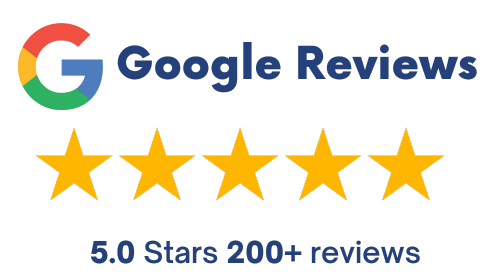
All Rights Reserved by CK Law Firm.


